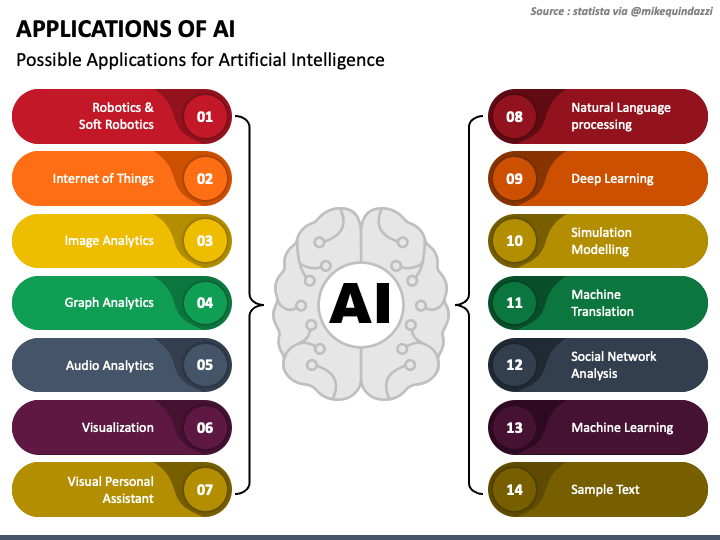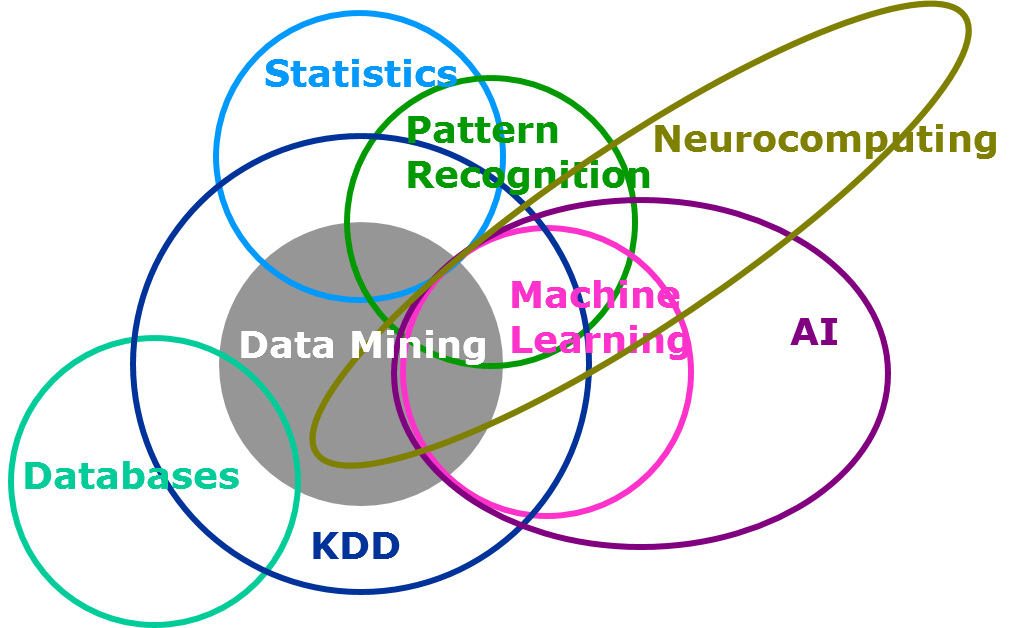
Different approaches are needed to make AI more accessible. Some explainability methods are focused on explaining why AI made decisions. Other explanations can be agnostic or contextual. Therefore, they can be highly unlikely to provide an explanation. Others try to connect knowledge-based system and make explanations more pertinent to context. No matter which approach you choose to take, it is important that you understand the context.
Interactive explanations should be used
In order to create an explainable artificial intelligent system, it is essential to design it in a way that it is both interactive and useful for users and system owners. This is because people have different preferences and previous experiences that influence their choices. They often take different meanings from similar explanations, which is an important factor for the system owner to consider when designing the explanation. Interactive explanations are important because they demonstrate the system's ability to adapt and customize to each user.

Second, users will need to be able to explain the application's capabilities. A counterfactual explanation could be enough for the smallest change in a model's features. An interactive explanation will need more work. Counterfactual explanations describe the output and do not reveal the inner workings of the system. This method of explanation is also useful for protecting intellectual property.
An interactive AI system should have the ability to integrate diverse data into a relevant result. An AI system that can't provide such detailed explanations isn't suitable for clinical usage. Also, human experts must be able understand and interpret the machine's decision-making processes. This requires trusting the machine's decisions and a high degree of confidence. Personalized medicine is going to require a high level of explainability.
It is essential to have background knowledge in order to create meaningful semantics
We will be discussing how background knowledge can help provide meaningful semantics to explainable AI systems. Background knowledge can be derived from domain knowledge. It can also be obtained from experiments. In general, background knowledge should be used for explanations as it facilitates human-machine interaction. We will also see how background knowledge can be injected back into a sub-symbolic model to improve performance.
It is well-known that background knowledge is crucial for explaining things. This has been widely acknowledged in psychology. Researchers have found that explanations are socially oriented and incorporate semantic information. This is critical for efficient knowledge transfer. Hilton (1990) states that explanations are a result of social interactions and semantic information. Kulesza et al. (2013) also found a positive relationship between explanation properties and mental models. The authors also found a relationship between completeness, soundness, and trust.

As AI is used more, the demand for explanations has increased. The ability to explain AI systems requires techniques and methods that are transparent and trustworthy. Understanding the user levels is critical to create explainable artificial intelligent systems that can win public trust. This will enable AI systems to trust humans. Consider the following background information when developing AI systems to get a better understanding.
FAQ
What countries are the leaders in AI today?
China has more than $2B in annual revenue for Artificial Intelligence in 2018, and is leading the market. China's AI industry includes Baidu and Tencent Holdings Ltd. Tencent Holdings Ltd., Baidu Group Holding Ltd., Baidu Technology Inc., Huawei Technologies Co. Ltd. & Huawei Technologies Inc.
China's government is heavily investing in the development of AI. China has established several research centers to improve AI capabilities. These centers include the National Laboratory of Pattern Recognition and the State Key Lab of Virtual Reality Technology and Systems.
China is also home of some of China's largest companies, such as Baidu (Alibaba, Tencent), and Xiaomi. These companies are all actively developing their own AI solutions.
India is another country where significant progress has been made in the development of AI technology and related technologies. India's government is currently working to develop an AI ecosystem.
What are some examples AI apps?
AI is used in many fields, including finance and healthcare, manufacturing, transport, energy, education, law enforcement, defense, and government. These are just a few of the many examples.
-
Finance - AI already helps banks detect fraud. AI can scan millions upon millions of transactions per day to flag suspicious activity.
-
Healthcare – AI is used in healthcare to detect cancerous cells and recommend treatment options.
-
Manufacturing - AI can be used in factories to increase efficiency and lower costs.
-
Transportation - Self Driving Cars have been successfully demonstrated in California. They are currently being tested around the globe.
-
Utilities can use AI to monitor electricity usage patterns.
-
Education - AI has been used for educational purposes. Students can, for example, interact with robots using their smartphones.
-
Government – Artificial intelligence is being used within the government to track terrorists and criminals.
-
Law Enforcement – AI is being used in police investigations. Investigators have the ability to search thousands of hours of CCTV footage in databases.
-
Defense - AI is being used both offensively and defensively. An AI system can be used to hack into enemy systems. Protect military bases from cyber attacks with AI.
What are the advantages of AI?
Artificial intelligence is a technology that has the potential to revolutionize how we live our daily lives. It has already revolutionized industries such as finance and healthcare. It's expected to have profound impacts on all aspects of education and government services by 2025.
AI is already being used in solving problems in areas like medicine, transportation and energy as well as security and manufacturing. The possibilities for AI applications will only increase as there are more of them.
So what exactly makes it so special? It learns. Unlike humans, computers learn without needing any training. Instead of learning, computers simply look at the world and then use those skills to solve problems.
This ability to learn quickly is what sets AI apart from other software. Computers can scan millions of pages per second. They can recognize faces and translate languages quickly.
It can also complete tasks faster than humans because it doesn't require human intervention. It may even be better than us in certain situations.
A chatbot named Eugene Goostman was created by researchers in 2017. It fooled many people into believing it was Vladimir Putin.
This is a clear indication that AI can be very convincing. Another advantage of AI is its adaptability. It can be trained to perform new tasks easily and efficiently.
This means that companies do not have to spend a lot of money on IT infrastructure or employ large numbers of people.
What is the future of AI?
The future of artificial intelligence (AI) lies not in building machines that are smarter than us but rather in creating systems that learn from experience and improve themselves over time.
So, in other words, we must build machines that learn how learn.
This would require algorithms that can be used to teach each other via example.
It is also possible to create our own learning algorithms.
You must ensure they can adapt to any situation.
What is the most recent AI invention?
Deep Learning is the newest AI invention. Deep learning is an artificial intelligence technique that uses neural networks (a type of machine learning) to perform tasks such as image recognition, speech recognition, language translation, and natural language processing. Google was the first to develop it.
The most recent example of deep learning was when Google used it to create a computer program capable of writing its own code. This was done with "Google Brain", a neural system that was trained using massive amounts of data taken from YouTube videos.
This enabled the system learn to write its own programs.
IBM announced in 2015 the creation of a computer program which could create music. Music creation is also performed using neural networks. These networks are also known as NN-FM (neural networks to music).
How does AI work?
An algorithm refers to a set of instructions that tells computers how to solve problems. An algorithm can be described as a sequence of steps. Each step has a condition that dictates when it should be executed. A computer executes each instruction sequentially until all conditions are met. This continues until the final result has been achieved.
For example, suppose you want the square root for 5. You could write down each number between 1-10 and calculate the square roots for each. Then, take the average. However, this isn't practical. You can write the following formula instead:
sqrt(x) x^0.5
You will need to square the input and divide it by 2 before multiplying by 0.5.
The same principle is followed by a computer. It takes your input, multiplies it with 0.5, divides it again, subtracts 1 then outputs the result.
What's the status of the AI Industry?
The AI industry is growing at an unprecedented rate. By 2020, there will be more than 50 billion connected devices to the internet. This means that everyone will be able to use AI technology on their phones, tablets, or laptops.
Businesses will need to change to keep their competitive edge. If they don’t, they run the risk of losing customers and clients to companies who do.
The question for you is, what kind of business model would you use to take advantage of these opportunities? Do you envision a platform where users could upload their data? Then, connect it to other users. You might also offer services such as voice recognition or image recognition.
Whatever you choose to do, be sure to think about how you can position yourself against your competition. Although you might not always win, if you are smart and continue to innovate, you could win big!
Statistics
- In the first half of 2017, the company discovered and banned 300,000 terrorist-linked accounts, 95 percent of which were found by non-human, artificially intelligent machines. (builtin.com)
- While all of it is still what seems like a far way off, the future of this technology presents a Catch-22, able to solve the world's problems and likely to power all the A.I. systems on earth, but also incredibly dangerous in the wrong hands. (forbes.com)
- A 2021 Pew Research survey revealed that 37 percent of respondents who are more concerned than excited about AI had concerns including job loss, privacy, and AI's potential to “surpass human skills.” (builtin.com)
- That's as many of us that have been in that AI space would say, it's about 70 or 80 percent of the work. (finra.org)
- The company's AI team trained an image recognition model to 85 percent accuracy using billions of public Instagram photos tagged with hashtags. (builtin.com)
External Links
How To
How to make an AI program simple
A basic understanding of programming is required to create an AI program. Many programming languages are available, but we recommend Python because it's easy to understand, and there are many free online resources like YouTube videos and courses.
Here's an overview of how to set up the basic project 'Hello World'.
First, open a new document. This can be done using Ctrl+N (Windows) or Command+N (Macs).
Enter hello world into the box. Enter to save the file.
Now press F5 for the program to start.
The program should display Hello World!
But this is only the beginning. These tutorials can help you make more advanced programs.